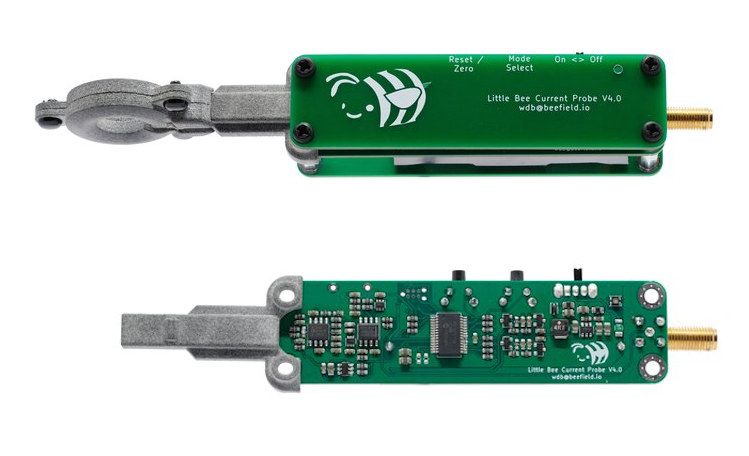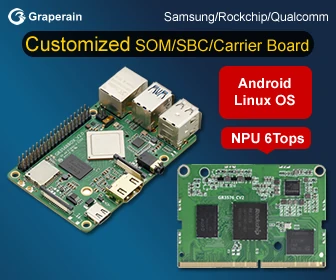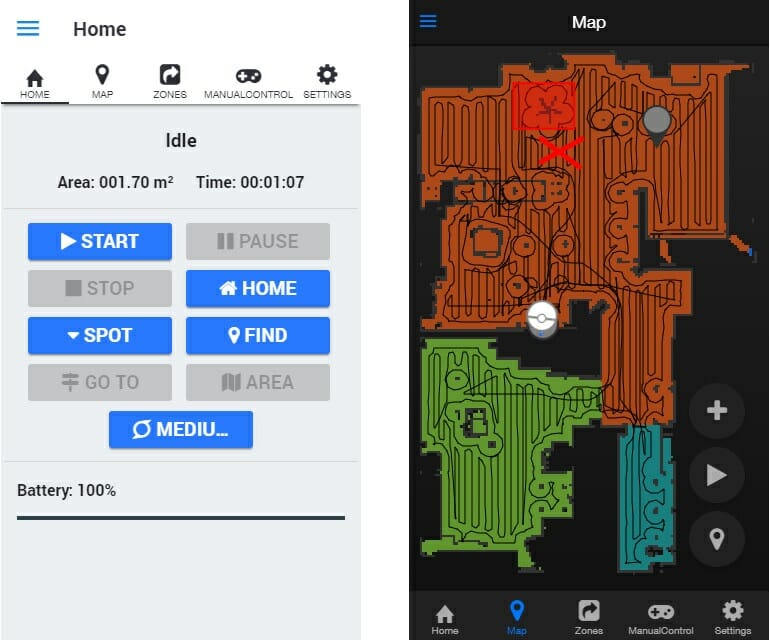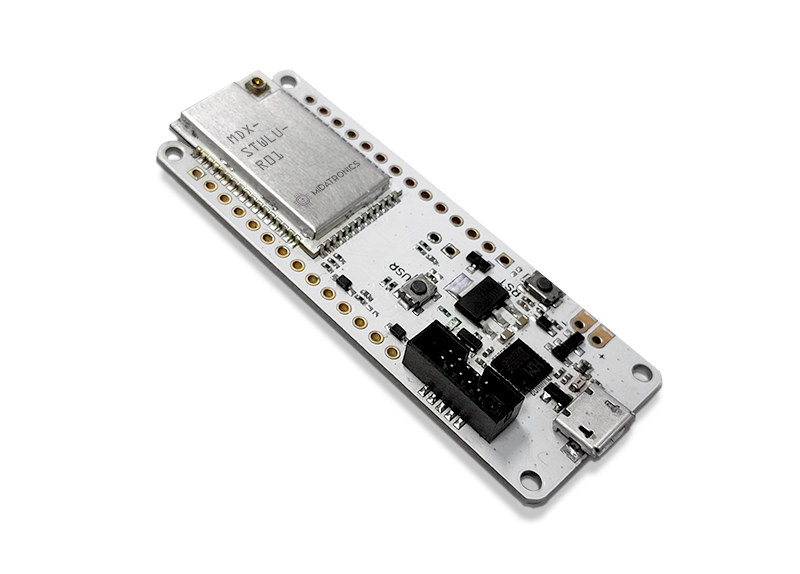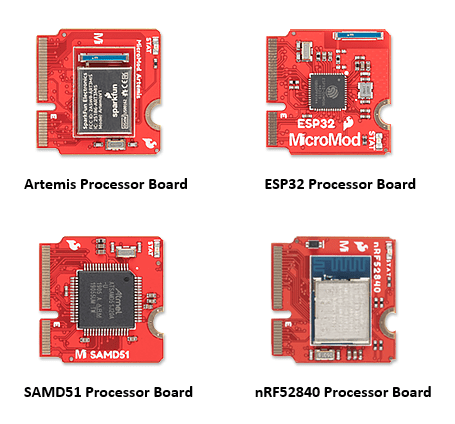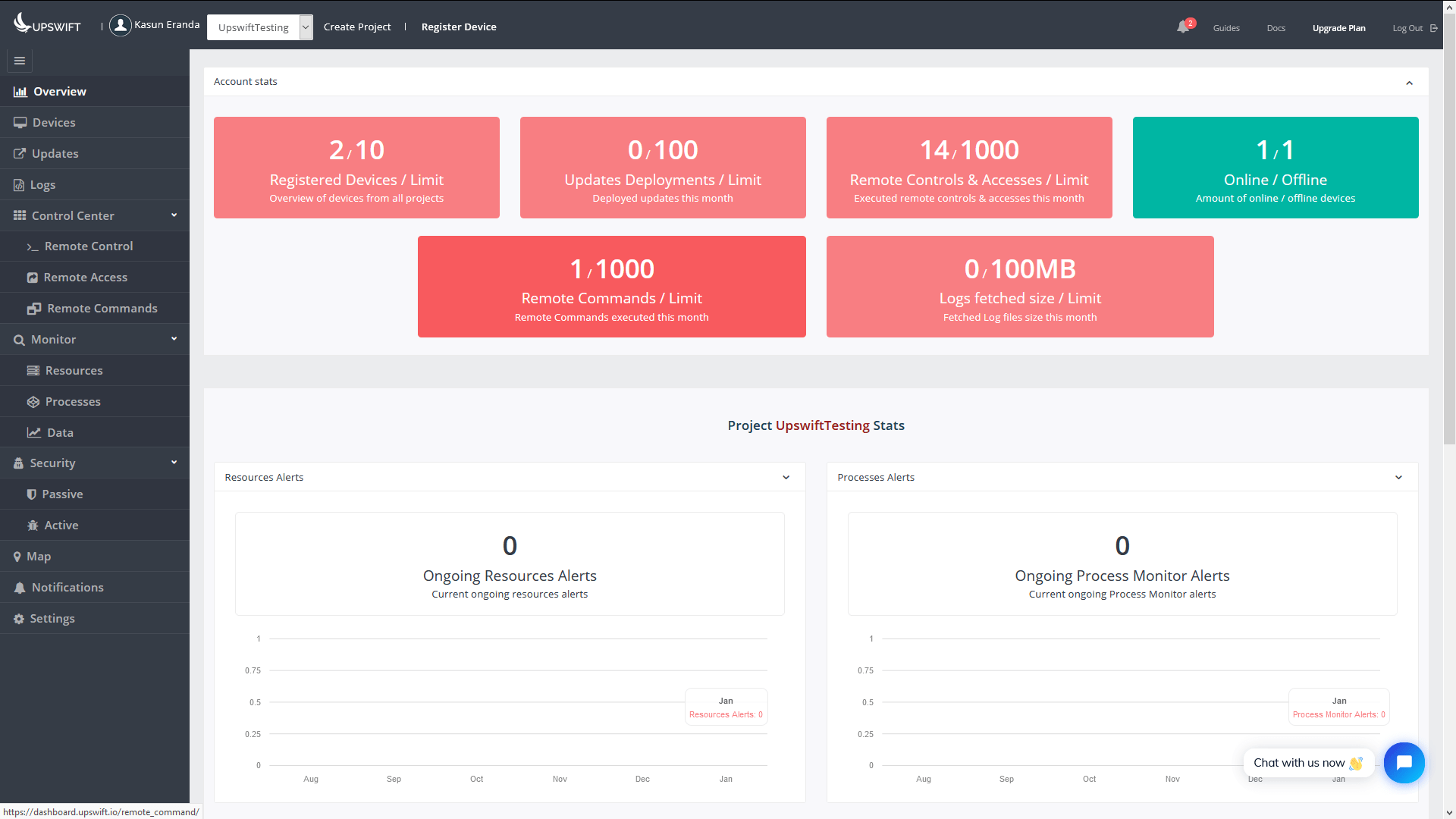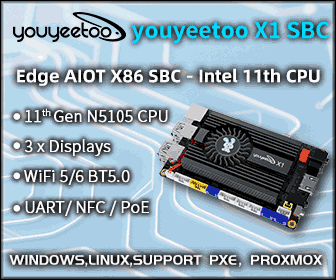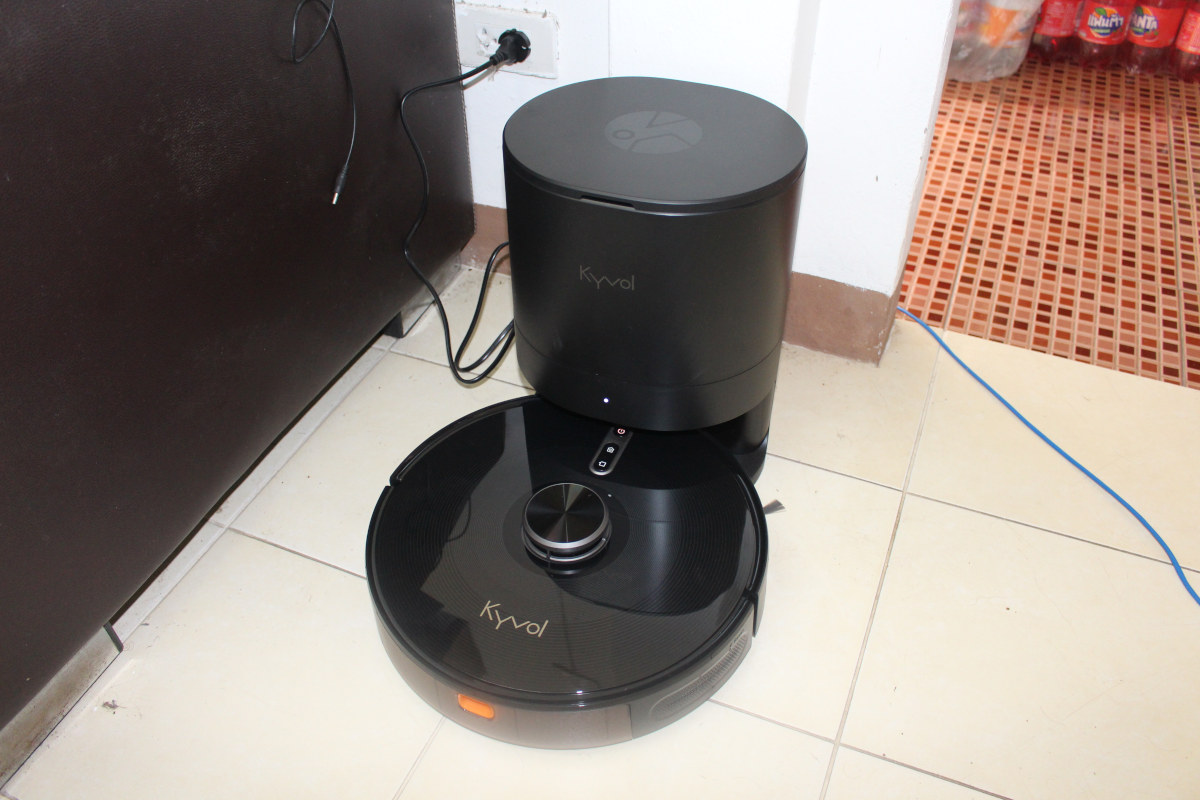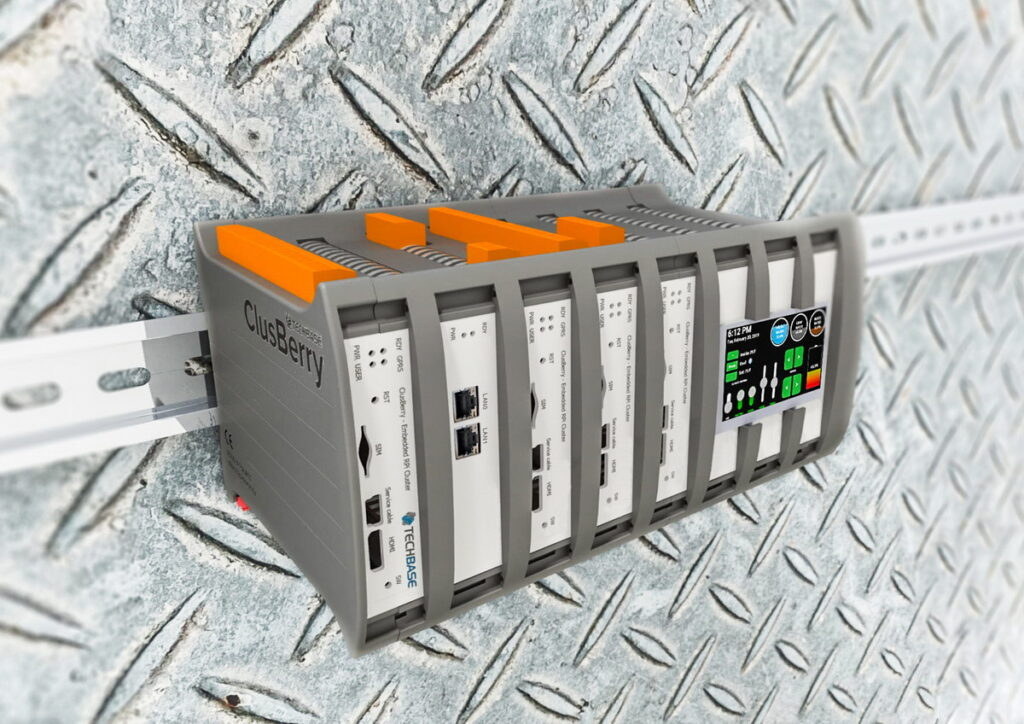Little Bee is an affordable, open-source hardware, and high-performance current probe and magnetic field probe designed to debug and analyze electronic devices at a much lower cost than existing solutions such as Migsic CP2100B or I-prober 520. This type of tool is especially important for power electronics, which has become ever more important with electric vehicles, alternative energy solutions, and high-efficiency power supplies. Little Bee B1 hardware specifications and key features: Based on Anisotropic Magneto-Resistive (AMR) magnetic sensor. Adjustable bandwidth (10 MHz and 1 MHz) Adjustable gain (1x and 4x) Automatic zeroing SMA Output Connector for connection to any standard 1 MΩ impedance oscilloscope input Current sensing Bandwidth – DC – 10 MHz Sensitivity – 0.25 Volts/Amp Max Current – +/- 5 A Noise – 3 mA RMS at 10 MHz bandwidth, 2 mA RMS at 1 MHz bandwidth DC Accuracy – +/- 15% Insertion Impedance – 100 nH in […]
Renesas RZ/G2L MPUs Feature Cortex-A55 & Cortex-M33 Cores for AI Applications
Renesas Electronics Corporation announced RZ/G2L MPUs, allowing enhanced processing for an extensive variety of AI applications. The RZ/G2L group of 64-bit MPUs includes three new MPU models featuring Arm Cortex-A55, and an optional Cortex-M33 core. These are RZ/G2L, RZ/G2LC, and RZ/G2UL MPUs. The Cortex-A55 CPU core typically delivers approximately 20 percent improved processing performance compared with the previous Cortex-A53 core, and according to Renesas, is around six times faster in “essential processing for AI applications”. The company already has four mid to high-end design level MPUs including RZ/G2E, RZ/G2N, RZ/G2M, and RZ/G2H, with combinations of Cortex-A53 and Cortex-A57 cores. The new RZ/G2L group of three MPUs forms the entry-level design with Cortex-A55. Hence, the seven MPU models together provide scalability from entry-level to high-end design. Common Key Features in RZ/G2L, RZ/G2LC, and RZ/G2UL MPUs Up to 2x Cortex-A55 cores Cortex-M33 core Camera interface (MIPI-CSI) Display interface (Parallel-IF) USB 2.0 interface […]
Valetudo is a cloud-free web interface for robot vacuum cleaners
In my review of Kyvol Cybovac S31 LDS smart robot vacuum cleaner, I noted that app permissions meant both the map of your house and GPS coordinates may be sent to the cloud. But it was pointed out to me that earlier LDS robot vacuum cleaners from Roborock/Xiaomi were supported by Valetudo project that removes the need to connect to the cloud, and implements a mobile-friendly web interface as well as MQTT support for integration with Home Assistant or Node-RED. The project is not a custom firmware for the robots, and instead, the stock firmware is patched with Valetudo which developers describe as an “alternative App implementation + mock cloud which runs on the robot itself.” The good news is that you don’t necessarily need to teardown your vacuum cleaner to root it and install Valetudo, but it will depend on the model, and manufacturing date/firmware installed. The less good […]
Arduino MKR inspired MKR Windy board is equipped with STM32WL LoRa SoC
We recently wrote about MKR SharkyPro BLE, Zigbee, OpenThread development board based on STM32WB55 MCU and following Arduino MKR form factor, but it turns out Midatronics has also launched a similar-looking board with LoRa connectivity. MKR Windy board features the company’s Windy STM32WL module with an uFL connector and following the same Arduino MKR layout. MKR Windy specifications: Wireless Module – Windy module (MDX-STWLU-R01) Wireless MCU – STMicro STM32WLE5JX/STM32WL55JX Arm Cortex-M4 MCU @ 48 MHz with up to 256KB flash, 64KB SRAM Connectivity Semtech SX126x sub-GHz radio with LoRa, (G)FSK, (G)MSK, and BPSK modulation, 150 MHz to 960 MHz frequency range RX Sensitivity: –123 dBm for 2-FSK, -148 dBm for LoRa Antenna – uFL connector for external antenna Supply Voltage – 1.8 V to 3.6 V Dimensions : 16 x 26 mm Temperature Range – 40°C to + 85 °C USB – 1x Micro USB port for power and programming […]
MicroMod modular ecosystem offers M.2 microcontrollers cards and carrier boards
MicroMod is a modular interface ecosystem for quick embedded development and prototyping. MicroMod comes with two components, that is a microcontroller “processor board” and a carrier board. PC industry’s M.2 connector is the interface between these two components. The carrier boards are for the usage of various peripherals and the processor board act as the brain of the application system. MicroMod processor board has a dimension of 22×22 mm that can be easily fitted on the carrier boards. Although, the original M.2 standard was dedicated to swapping out peripherals where a user could swap one component with the other one. The MicroMod standard is for swapping out microcontrollers according to the functional and application requirements. MicroMod Processor Boards Artemis Processor Board comes with an Ambiq Apollo 3 Blue Arm Cortex-M4F with BLE 5.0 running up to 96MHz and a power rating of less than 5mW. It also supports the TensorFlow […]
Managing Edge IoT Linux Devices Closely, Remotely, Securely
CNXSoft: This is a guest post by Roy Dalal, Embedded Systems Engineer who looked for IoT device management solutions, and ended up using Upswift. With the recent shift from Real-Time Operating Systems (RTOS) to Linux-based embedded systems, there has been a boom in the IoT industry in creativity and expandability and opened doors to a whole new level of automation. Unlike the previous generation of IoT devices which followed the “program once, use forever” concept, with the new developments in the IoT industry, mainly the devices based on Linux operating systems that demand more and more flexibility, accessibility, and control. It has been challenging to address all these points at once when it comes to remote monitoring and control of these devices; especially if one produces thousands of those smart devices to be sold worldwide. The ability to manage these connected devices (Raspberry Pi, Jetson Nano, or any SOM/SBC that […]
Cybovac S31 Review – A smart robot vacuum cleaner with visual SLAM support
I’ve been asked to review robot vacuum cleaners in the past but refused because they were quite basic with a simple vacuum function, obstacle detection, maybe a mopping function, and not much else. But Kyvol Cybovac S31 is different as it integrates a laser distance sensor (LDS) enabling visual SLAM to create a map of your house, and can be controlled with a mobile app for Android or iOS which ended up even more useful than I initially expected. S31 Smart Robot Vacuum Cleaner Unboxing The package was much bigger than I expected, mostly because the charging station also includes a dust bag where dust from the main unit is automatically vacuumed each time cleaning is complete. Key features of the system as shown above: LDS robot vacuum cleaner (main unit) 4 levels of suction power Cleaning modes – Auto, area, spot, edge Anti-drop and anti-collision features 2.4 GHz WiFi […]
ClusBerry 9500-CM4 – A Raspberry Pi CM4 cluster, industrial style
Raspberry Pi cluster boards / solutions pop-up from time to time. But so far, I think we’ve seen only one based on Raspberry Pi CM4 modules with the upcoming Turing Pi 2 mini-ITX cluster board supporting four of those. TECHBASE has now unveiled a different kind of Raspberry Pi CM4 cluster with ClusBerry 9500-CM4 integrating up to eight Raspberry Pi Computer Module 4 in a DIN-Rail housing for industrial applications. ClusBerry 9500-CM4 is designed to be customizable with a choice of Raspberry Pi CM4 based modules and I/O cards: Standard 9500-CM4 cluster module with Compute Module 4 and a selection of configuration that include: I/O Controller with DI, DO, AI, 1-Wire, RS-232/485 and CAN interfaces Communication Gateway with up to 2x Ethernet, serial ports, wireless connectivity: LTE-cat.M1, 4G, 5G, LoRa, ZigBee, Z-Wave, Wireless M-Bus AI Gateway with Coral Edge TPU via PCIe M.2, or up to 4x Coral Edge TPU […]


